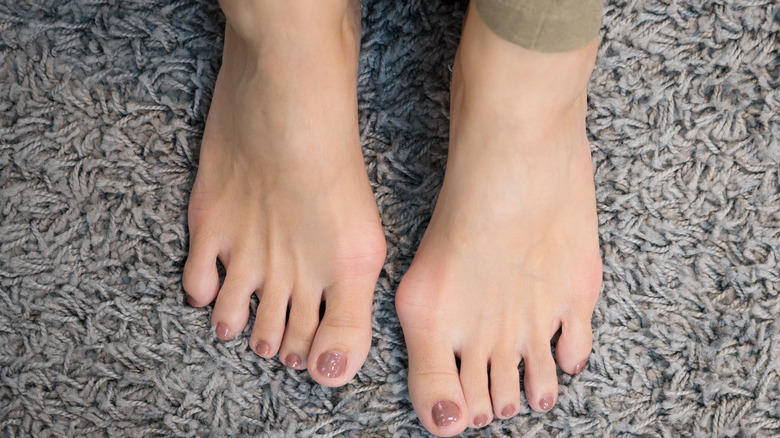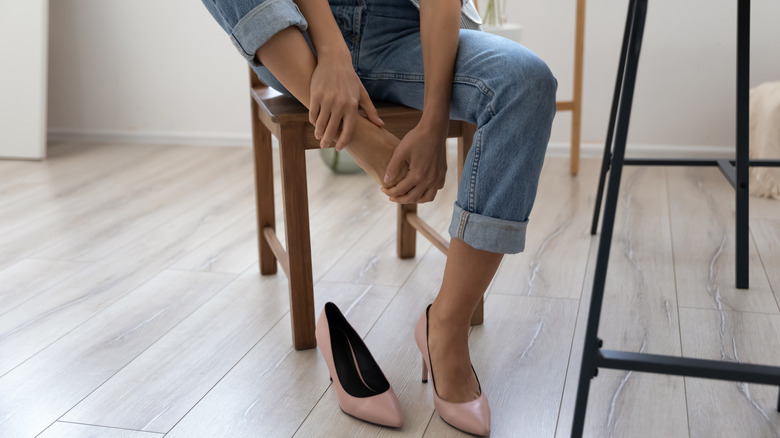This Is What Really Causes Bunions
Bunions are large bumps that grow on the side of your foot around the joint of your big toe (via the Mayo Clinic). While a bunion may look like a swollen bump on your foot, it is actually the result of bones moving out of place. This movement forces your big toe to veer toward your other smaller toes. Bunions can also develop on the outside joint of the little toe.
Some bunions can look red and be painful. Additionally, they can cause calluses to form between your toes due to constant friction. In most cases, bunions fall into three categories: mild, moderate, and severe, according to the Harvard Medical School. You can relieve pain by wearing wide shoes that don't apply pressure to the bunion, and protective pads can also help. When severe cases cause intense pain that interferes with walking and wearing shoes, surgery may be recommended as a form of treatment.
Tight shoes are not the only cause of bunions
Poorly fitting shoes, especially those with pointed toes, can cause bunions, according to the American Academy of Orthopaedic Surgeons (AAOS). Women are much more likely to have bunions than men, according to research published by the Institute for Quality and Efficiency in Health Care in 2018. While wearing tight-fitting shoes can cause or contribute to bunions, it is not the main reason why they form.
The primary cause of bunions is weak connective tissues in your feet. If you have a short Achilles tendon, short calf muscles, or flat feet, you might also be more prone to bunions. Inflammatory diseases, such as rheumatoid arthritis, increase the chances of developing a bunion, according to the AAOS. In some cases, bunions are hereditary as well. They may develop due to the shape and structure of your feet. Your doctor can help diagnose your bunion and recommend the best form of treatment.


